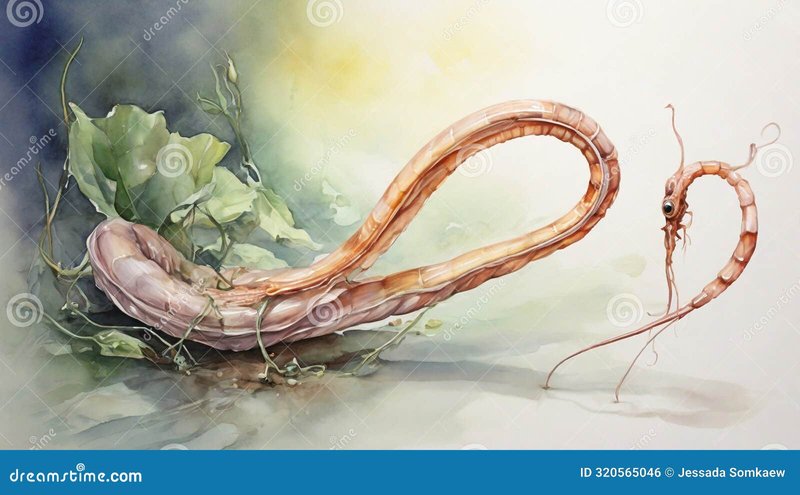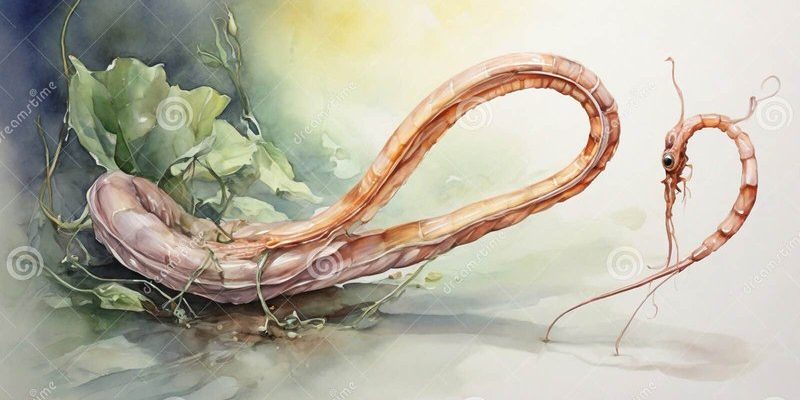
Ribbon worms, belonging to the phylum Nemertea, are often overlooked in the grand scheme of marine life. These soft-bodied invertebrates can be found wriggling in the sand, lurking under rocks, or gliding through the ocean water. Today, we’ll dive into the incredible world of ribbon worms and explore how they use their incredible proboscis to capture food. Trust me, it’s much cooler than it sounds!
What Is a Proboscis?
A proboscis is a specialized feeding structure that many animals use to extract nourishment. Think of it as an elongated, flexible organ that can stretch, contract, and—most importantly—grab things. In the case of ribbon worms, their proboscis is not only long and flexible but also armed with a sticky goo that makes catching prey a breeze.
You might be wondering what types of prey ribbon worms usually target. Well, these worms are opportunistic eaters and will take what they can get! They often feast on small crustaceans, mollusks, and even other soft-bodied invertebrates. When their proboscis extends, it can reach out to snag unsuspecting meals from a distance, much like how a chameleon uses its tongue to catch insects.
How Does the Proboscis Work?
So, how exactly does this incredible proboscis function? It’s all about muscle control and some clever biology. Ribbon worms have special muscles that allow them to both extend and retract the proboscis quickly. When they spot prey, the proboscis shoots out rapidly, almost like a slingshot!
Once the proboscis captures the prey, it secretes a sticky substance that keeps the meal glued in place. This is important because it prevents the captured prey from escaping while the ribbon worm brings it closer to its mouth. Honestly, it’s a pretty efficient system—kind of like a fishing net that instantly wraps around fish!
The Role of Adhesive Cells
Within the proboscis, there are specialized adhesive cells that produce this sticky secretion. These cells can essentially “glue” the ribbon worm’s meal into place, giving it a solid grip. Think of it like the way a spider’s web traps its prey—sticky, yet delicate.
But there’s more! The proboscis can have additional features, such as spines or barbs, that further enhance its ability to snag and hold onto food. These adaptations vary among different species of ribbon worms, showcasing the diversity of this unique feeding mechanism.
The Importance of Hydrodynamics
When it comes to capturing prey, ribbon worms rely on more than just their incredible proboscis; they also harness the power of water. Ribbon worms are often found in marine environments where currents can help to bring prey within reach.
As the water flows around them, ribbon worms can position themselves strategically to intercept passing meals. It’s similar to how a fisherman casts a line into a stream—timing and placement are key! This relationship between ribbon worms and their aquatic habitat highlights the delicate balance of marine ecosystems and how each creature plays a role.
Why Ribbon Worms Matter
You might be wondering, “Why should I care about ribbon worms?” Well, these little critters play an essential role in their ecosystems. By preying on small organisms, they help maintain the balance of marine life and contribute to nutrient cycling. Their presence can indicate the overall health of a marine environment, making them valuable to scientists studying ocean ecosystems.
Unfortunately, ribbon worms are often overlooked in discussions about marine biodiversity. By learning about them, we can appreciate the stunning complexity of life beneath the waves.
Challenges in the Life of a Ribbon Worm
Life as a ribbon worm isn’t all smooth sailing. Even with their impressive proboscis, they face challenges like predation and changes in their environment. Larger creatures, such as fish or sea birds, will gladly snack on ribbon worms if given the chance. This constant threat means they must be stealthy and quick to retract their proboscis if danger approaches.
Additionally, changing water temperatures, pollution, and habitat loss affect their populations. As scientists work to better understand these challenges, they can advocate for conservation efforts to protect these unique creatures and their habitats.
Wrapping It Up
So there you have it: the fascinating world of ribbon worms and their impressive proboscis. By using this specialized feeding structure, they capture prey with grace and efficiency, playing a crucial role in their underwater ecosystems.
By taking a moment to appreciate these remarkable worms, we gain a deeper understanding of marine life. Who knew that something as simple as a sticky proboscis could tell us so much about nature? Next time you’re near the water, take a moment to think about the incredible creatures hiding just beneath the surface. The ocean is full of surprises waiting to be discovered!

